Wildlife Connections: Leaf Habitat
By Laura Baird
Leaf Habitat
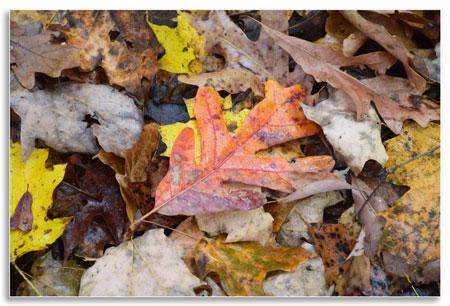
In the wild, leaves pack down under trees and slowly decay. The process builds and enriches the soil, feeding the very trees the leaves fell from. Today, most American homeowners remove this dead plant material from their yards and instead use synthetic fertilizers to keep the grass green.
But when leaves are removed, more is lost than just free nutrients. Leaf litter serves as vital food and habitat for many invertebrates. It is particularly important in the winter, when it becomes shelter for creatures that may not need it in the warmer months. Without the insulating cover of dead leaves, fewer of our resident worms, spiders, beetles, bugs, flies, snails and many more invertebrates could not survive a harsh winter.
It is becoming more popular to shift away from the traditional, sterile, bug-free yards and instead create slightly wilder spaces with the native plants that better support birds and butterflies. As homeowners begin to embrace better urban biodiversity, let’s not forget the potential for biodiversity hidden within the leaves.
Winter Residents
Invertebrates must find a way to survive the winter. Some, like grasshoppers, overwinter as eggs, buried in the soil. Some, like mourning cloak butterflies, wait for spring as fully formed adults. Other species survive in the immature stages, as larvae or pupae. Many species spend the winter tucked away in crevices and shelters, but some simply stay hidden under the leaves.
Luna moths, perhaps the most beloved moth in North America, lay their eggs on a variety of trees - sweetgums, walnuts, hickories and more. Lunas overwinter in cocoons, which can often be found on the ground. They rely on leaf litter to disguise their presence and keep them safe until spring.
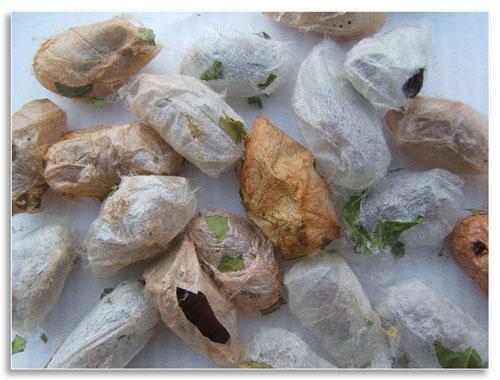
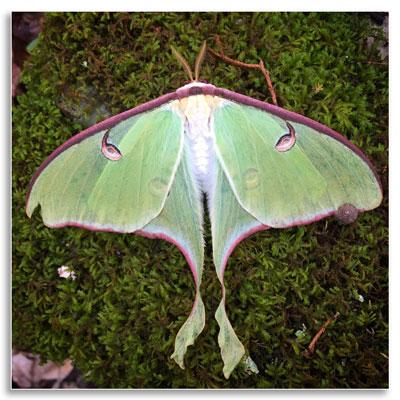
Great spangled fritillaries lay their eggs near patches of violets, their host plant. The eggs hatch in the late summer or fall, but the caterpillars survive until spring without eating. These tiny hatchlings stay low to the ground, awaiting fresh violet leaves in the spring. If you have violets creeping into your lawn or garden, you may have tiny fritillary caterpillars hiding under your fallen leaves.
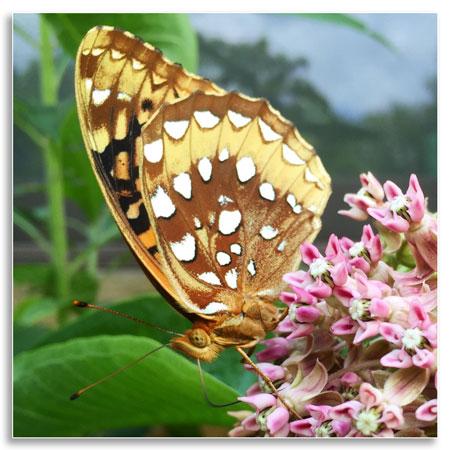
You may be concerned about your garden pests. Well, they may be hiding out in the leaves - but their predators are there too. Many spiders will remain active in the insulating leaf litter, hunting invertebrates and keeping the population in check.
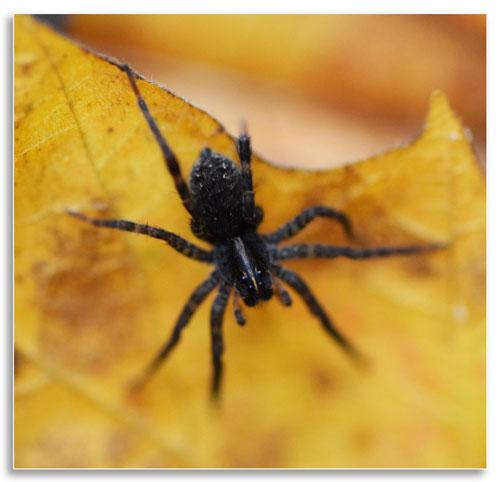
If having bugs for bugs’ sake doesn’t appeal to you, consider the birds. When spring comes, birds will scratch through the leaf litter looking for invertebrates to eat. A patch of bug-heavy leaves is a bird buffet in the making.

So what should we do with fallen leaves?
The most popular reason for removing leaves is to protect turf grass. It’s true: a heavy leaf fall can kill grass. Remove it from the grass, but use care. A rake is gentler on hidden cocoons and creatures than a leaf blower. If you happen to uncover a cocoon, move it to a more protected area of your yard.
Have an area that gets thick leaf coverage, year after year?
Consider transitioning it into a garden bed and stop fighting to keep the grass alive. Plant some native perennials that won’t mind wearing a thick blanket every winter.
Do you have too many leaves?
Probably not! Most sources recommend leaf mulch in garden beds to be thick, even a couple feet deep. Keep it thinner in spots where you’re concerned about bulbs or delicate, herbaceous plants, but remember that some leaf litter is natural, especially for our native, shade-tolerant species. Woodchip mulch can be sprinkled on top to keep the leaves in place, or leaves can be chopped up with a lawnmower before distribution. Leaves can also be moved into compost for a year before being spread for a more traditional, tidy look.
If you still have too many leaves, consider leaving them in the grass. Studies at Michigan State University have suggested that simply mowing over leaves can result in a healthier lawn with fewer weeds. The chopped leaves will be evident and ‘messy’ for a week or so, but they work into the grass and will be unnoticeable by spring.
Have a problem plant?
Traditionally, gardeners have removed leaves and dead plant material to reduce the spread of disease. If you have a plant that is unhealthy and fighting off disease or pestilence, then yes, remove the dead material and dispose of it. Remove leaf litter from around the plant to cut down on overwintering pests, as they probably haven’t strayed far. But don’t remove material from healthy plants. These leaf piles may harbor the predators that will help you control your pest issues in the coming year.
Photography
- Fresh leaf litter (L. Baird)
- Luna moth cocoons (Wikimedia Commons/CC)
- A luna moth (L. Baird)
- Great spangled fritillary (L. Baird)
- An immature wolf spider on a fallen leaf (L. Baird)
- A robin searching for insects (James Demers, Pixabay, CC)
About the Author
Laura Baird is the Assistant Preserve Manager and Naturalist at Shaker Village of Pleasant Hill, a 3,000 acre historical site in Harrodsburg, Kentucky that was once home to the third largest Shaker community in the United States. Email Laura at lakabaird@gmail.com.
